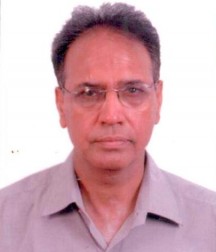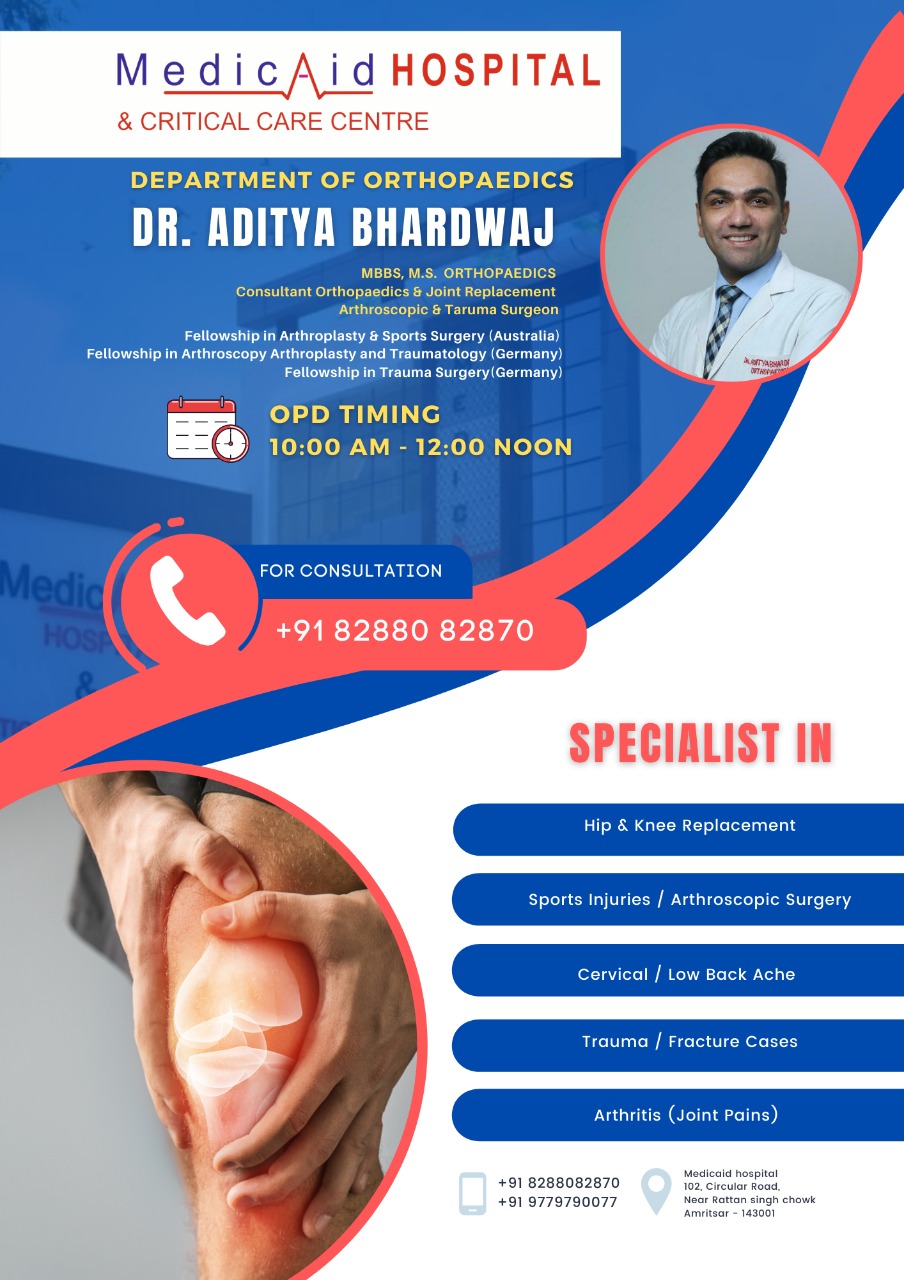
Dr. Sunandan Bhardwaj
M.S. Ortho
Orthopaedics is the branch of medicine that specializes in diseases of and injuries to bones. French physician Nicholas Andry coined the term “orthopaedia” in his 1741 book on the prevention and correction of muscular and skeletal deformities in children. He united the Greek word “orthos,” meaning straight, with “pais,” meaning child. The term orthopaedics has remained in use, though the specialty has broadened beyond the care of children.

Dr. Aditya Bhardwaj
Bone is a living and functioning part of the body. A broken bone will generate new growth to repair the fracture and fill in any areas from which bone is removed. Therefore, a bone that is deformed from birth can be manipulated, cut, braced, or otherwise treated to produce a normal form. A broken bone held in alignment will heal with no resulting physical deformity.<

Bone is a living and functioning part of the body. A broken bone will generate new growth to repair the fracture and fill in any areas from which bone is removed. Therefore, a bone that is deformed from birth can be manipulated, cut, braced, or otherwise treated to produce a normal form. A broken bone held in alignment will heal with no resulting physical deformity.
Surgical Treatment
Orthopaedic surgeons perform numerous types of surgeries. Common procedures include:
- Arthroscopy — a procedure using special cameras and equipment to visualize, diagnose and treat problems inside a joint.
- Fusion — a “welding” process by which bones are fused together with bone grafts and internal devices (such as metal rods) to heal into a single solid bone.
- Internal Fixation — a method to hold the broken pieces of bone in proper position with metal plates, pins or screws while the bone is healing.
- Joint Replacement (partial, total and revision) — when an arthritic or damaged joint is removed and replaced with an artificial joint called a prosthesis.
- Osteotomy — the correction of bone deformity by cutting and repositioning the bone.
- Soft tissue repair — the mending of soft tissue, such as torn tendons or ligaments.
Recent technological advances such as joint replacement and the arthroscope (a specially designed illuminated surgical instrument) have benefitted orthopedic patients. Many orthopedic surgical procedures no longer require an open incision to expose the joint fully. Now, flexible arthroscopes can be inserted through a small incision in the skin and then into a joint, such as the knee, and then can be manipulated through the joint to locate and identify the nature of the injury. Arthroscopy can be used to look into many joints of the body. These include knees, shoulders, ankles, wrists, and elbows.
Interesting facts:
- 90 percent of knee replacement patients experience a significant reduction in pain; 85 percent of artificial knees still function 20 years after surgery.
- About 500,000 knee replacements and more than 175,000 hip replacements are performed annually, and those numbers are on the rise. In fact, hip replacements are expected to increase 174% in the next 20 years, and knee replacements will rise even more — 673%.

